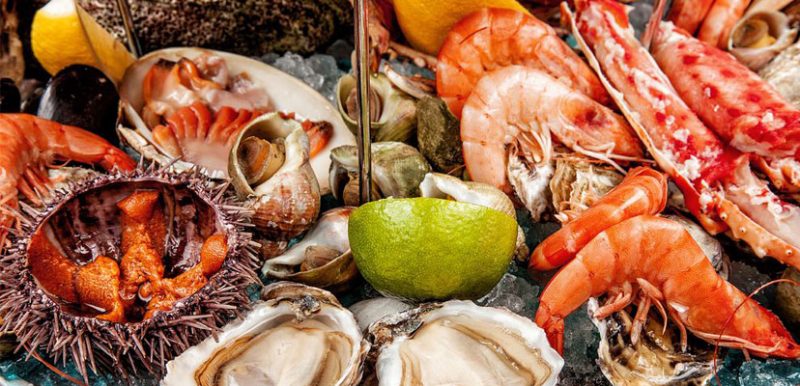Seafood allergies are considered lifelong. It is very unlikely that a person will outgrow a seafood allergy. Crustacean and shellfish allergies are rare among young children. Approximately 40% of fish allergy reactions and 60% of shellfish allergy reactions were first experienced during adulthood.
People allergic to one type of seafood, like fish, crustaceans (lobster, crab, etc.) or shellfish (oysters, mollusks, etc.), may not be allergic to other kinds of seafood. For example, some people can eat fish safely but will react to crustaceans.
Fish oils are often safe to consume for people with fish allergies. The oils tend to be refined enough to remove all fish proteins that can trigger allergic reactions. It is important to check with your allergist before eating fish oils.
ALSO KNOWN AS:
- fish: tuna, bass, sole, snapper, anchovy, basa, halibut, salmon, eel
- crustaceans: crab, shrimp, lobster, prawns, crayfish
- shellfish: mussels, clam, scallops, escargot, squid (calamari), abalone
COMMON FOOD SOURCES OF SEAFOOD:
- Gelatin, marshmallows
- Deli meats, hot dogs (from gelatin)
- Dips, spreads
- Fried foods (from contaminated frying oil)
- Ethnic foods: fried rice, paella and spring rolls
- Imitation fish or shellfish
- Pizza toppings
- Salad dressings
- Sauces, for example, marinara, Nuoc Mâm, steak and Worcestershire
- Spreads, for example, taramasalata
- Sushi
NON-FOOD SOURCES OF SEAFOOD:
- Steaks, Burgers, Meatloaf
- Compost or fertilizers
- Fish food
- Lip balm, lip gloss
- Pet food

